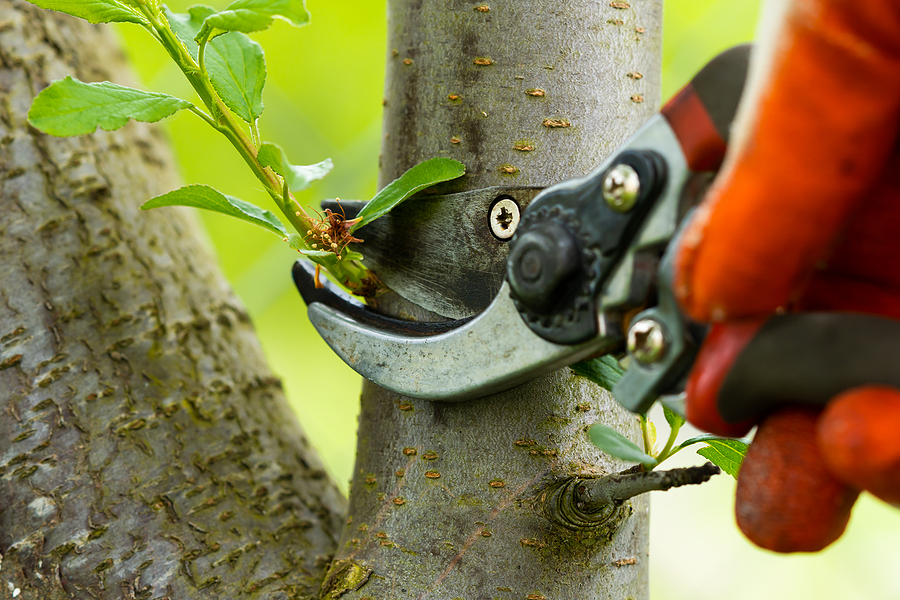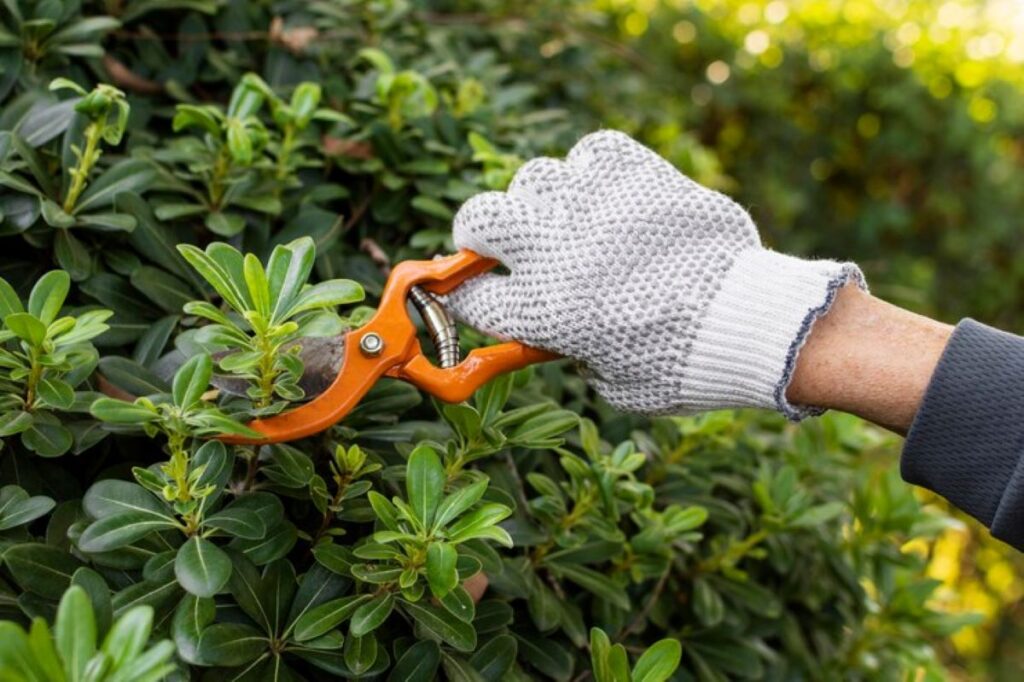Tree pruning is not just an aesthetic choice; it is a crucial aspect of maintaining a safe and healthy property. Trees that are not regularly pruned can pose significant risks to people, structures, and even the trees themselves. Understanding the importance of tree pruning is essential for any property owner looking to ensure safety and enhance the beauty of their landscape.
Understanding the Basics of Tree Pruning
What is Tree Pruning?
Tree pruning is the process of selectively removing certain parts of a tree, including branches, buds, or roots. This practice is undertaken to promote healthy growth, enhance flowering and fruiting, and improve overall tree structure. Proper pruning techniques help to shape trees and remove dead or diseased wood, which can harbor pests and diseases.
In essence, tree pruning is a form of care that helps trees achieve their full potential. While it may seem simple, effective pruning requires knowledge and skill to execute correctly. Timing and technique are vital to ensure that the tree remains healthy and continues to thrive in its environment. For instance, different species of trees have specific pruning needs and optimal times for pruning, which can vary based on their growth cycles and local climate conditions. Understanding these nuances can significantly impact the long-term health and aesthetics of the tree.
The Science Behind Tree Pruning
Understanding the biological responses of trees to pruning is crucial. When a tree is pruned, it triggers a growth response as the tree tries to heal the wounds caused by cuts. This response can result in new growth, which can sometimes lead to a stronger tree, especially when problematic or unhealthy branches are removed.
Furthermore, the strategic cutting of branches can improve sunlight penetration and airflow within the tree canopy, promoting better health and reducing the likelihood of diseases. Trees that have undergone proper pruning are often more resilient and can withstand environmental stresses more effectively. Additionally, pruning can help manage the tree’s size and shape, making it more suitable for its surroundings, whether in a residential yard or a public park. This not only enhances the tree’s aesthetic appeal but also contributes to safety by reducing the risk of falling branches. Moreover, understanding the seasonal growth patterns of trees can aid in determining the best times for pruning, ensuring that the tree can recover and flourish after the intervention.
The Direct Impact of Tree Pruning on Property Safety
Preventing Property Damage
One of the key reasons for regularly pruning trees is to prevent property damage. Overgrown branches can become a liability, especially during storms or high winds. Falling branches can damage roofs, vehicles, and other structures, potentially leading to costly repairs.
By regularly assessing and pruning trees, homeowners can mitigate these risks significantly. Removing branches that are too close to structures or have the potential to fall can create a safer environment for both the property and its occupants. Furthermore, pruning can also promote healthier tree growth, reducing the likelihood of disease or decay that can weaken branches over time. Healthy trees are less prone to breakage, thus providing an additional layer of safety for the property.
Reducing the Risk of Accidents
Another critical aspect of tree pruning is the reduction of accidents. Low-hanging branches and dense foliage can obstruct visibility, making pathways and roads hazardous for pedestrians and drivers alike. In residential areas, branches hanging over sidewalks can pose risks to passersby, particularly in adverse weather conditions.
Regular pruning enhances visibility and decreases the chances of accidents occurring on or around the property. This is particularly important for families with children or where outdoor activities are common. Safe pathways and clear sightlines contribute greatly to overall property safety. Additionally, well-maintained trees can enhance the aesthetic appeal of a property, making it more inviting and pleasant for residents and visitors. A well-pruned landscape not only looks good but also encourages outdoor activities, fostering a sense of community and well-being among neighbors. Moreover, it can increase property value, as prospective buyers often appreciate a home with a well-kept yard and safe surroundings.
The Role of Professional Tree Pruning Services
Expertise and Experience Matter
While some homeowners may choose to prune their trees themselves, enlisting professional tree pruning services is often the best choice. Professionals bring a wealth of experience and knowledge, ensuring that pruning is done correctly and safely. They understand the anatomy of trees and know how to make cuts that promote healthy growth without causing harm.
Additionally, professional arborists are trained to identify potential issues such as disease or pest infestations that may not be apparent to untrained eyes. This expertise can save homeowners from future problems and costs associated with tree health and safety. By assessing the tree’s overall condition, professionals can recommend appropriate treatments or preventive measures, ensuring that the tree remains a vibrant part of the landscape for years to come.
The Benefits of Hiring Professionals
Hiring professionals for tree pruning not only provides peace of mind regarding the quality of work but also enhances the overall safety of the property. Professionals have access to high-quality equipment and are skilled in using it, which minimizes the risks associated with tree work.
Moreover, many professional services are insured. This means that if any accidents occur during the pruning process, the financial burden does not fall on the homeowner. Overall, the benefits of hiring tree pruning experts far outweigh the costs. In addition to safety and expertise, professional pruning can improve the aesthetic appeal of the property. Well-pruned trees can enhance curb appeal, potentially increasing property value. A well-maintained landscape not only looks more inviting but also contributes to the overall health of the ecosystem by allowing for better air circulation and light penetration.
Furthermore, regular professional pruning can lead to stronger trees. By removing dead or weak branches, arborists help the tree allocate its energy more efficiently, promoting robust growth and resilience against environmental stressors. This proactive approach to tree care ensures that trees can withstand storms, droughts, and other challenges, ultimately leading to a healthier and more sustainable landscape.
The Frequency and Timing of Tree Pruning
When to Prune Your Trees
Timing is everything when it comes to tree pruning. The ideal time for pruning depends on the species of the tree and its growth cycle. Generally, late winter to early spring is considered the best time for most types of trees because they are still dormant, and pruning at this time encourages new growth when the growing season begins.
However, for certain flowering trees, pruning should be carefully timed based on when they bloom. For instance, spring-flowering trees like dogwoods and cherry blossoms should be pruned immediately after they finish blooming, while summer-flowering varieties, such as crepe myrtles, can be pruned in late winter or early spring. Understanding the specific needs of each tree species will help ensure effective pruning results, allowing for a vibrant display of foliage and flowers in the growing season.
Seasonal Considerations for Tree Pruning
Different seasons can affect the outcome of pruning efforts. For instance, pruning in the fall may expose trees to diseases that are more prevalent during cooler, wetter months. In some cases, it can also cause trees to expend energy on new growth rather than preparing for dormancy. Moreover, winter pruning can be beneficial for certain trees, as it allows for easier access to branches without the obstruction of leaves, enabling a more precise cut.
Understanding the seasonal dynamics of your local climate is essential. Factors such as temperature fluctuations, rainfall patterns, and even local pest populations can influence the health of your trees. Consulting with professional arborists can help homeowners make informed decisions about the best times for pruning to maximize health and safety benefits. Additionally, regular monitoring of tree health throughout the year can help identify any issues early on, allowing for timely interventions that can prevent more serious problems down the line.
Long-Term Benefits of Regular Tree Pruning
Enhancing Property Aesthetics
Aside from the safety benefits, regular tree pruning significantly enhances the visual appeal of a property. Well-pruned trees look healthier and more attractive, which can improve the overall landscape design. Shaping trees properly can create a harmonious layout that complements the architecture of a home.
For properties aiming to attract buyers or increase curb appeal, investing in regular tree pruning is a wise choice. A beautiful landscape not only enhances personal enjoyment but also makes a strong impression on visitors and potential buyers. Moreover, trees that are pruned correctly can provide a more open view of the home, allowing natural light to filter through and brighten the exterior. This interplay of light and greenery can create inviting spaces that encourage outdoor activities, such as family gatherings or quiet evenings spent in the garden.

Boosting Property Value
Regular tree pruning can also play a critical role in boosting property value. Well-maintained trees add significant aesthetic and functional value to a property. Potential buyers often view mature trees as an asset, providing shade, beauty, and a sense of established landscaping.
A well-cared-for landscape can drastically increase a property’s resale value. Therefore, investing in professional tree pruning services is not just about safety and aesthetics; it is also a strategic financial investment that can pay off in the long run. Additionally, the presence of healthy trees can reduce energy costs by providing shade during hot months, which can be a selling point for environmentally conscious buyers. The overall impression of a well-maintained yard, complete with vibrant and thriving trees, communicates a sense of care and attention to detail that resonates with prospective homeowners.
Furthermore, the benefits of tree pruning extend beyond immediate visual and financial gains. Regular maintenance encourages healthy growth and longevity of the trees, ensuring that they remain a valuable asset for years to come. Pruning can also help prevent disease and pest infestations, which can lead to costly repairs or removals in the future. By fostering a healthy ecosystem in your yard, you not only enhance your property but also contribute positively to the local environment.
Related: Top Tips for Finding Quality Tree Pruning for Healthier Trees

